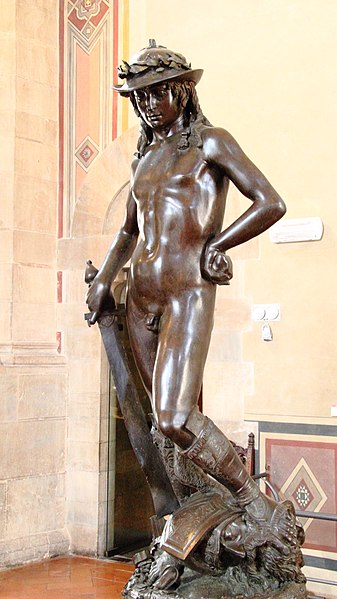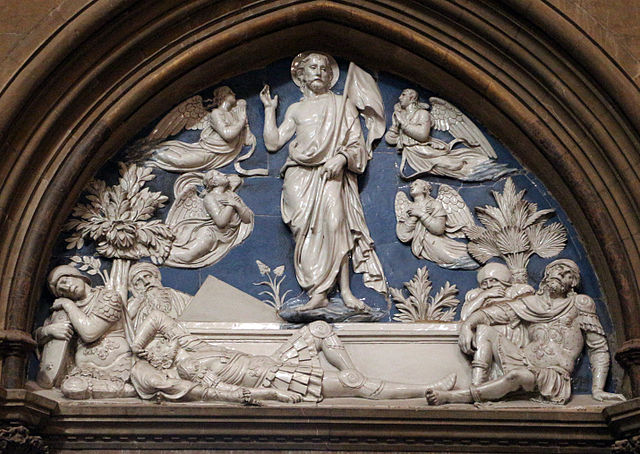David is the title of two statues of the biblical hero by the Italian Early Renaissance sculptor Donatello. They consist of an early work in marble of a clothed figure (1408–09), and a far more famous bronze figure that is nude except for helmet and boots, and dates to the 1440s or later. Both are now in the Museo Nazionale del Bargello in Florence. The first was Donatello's most important commission up to that point, and had a religious context, placed on Florence Cathedral. The bronze remains his most famous work, and was made for a secular context, commissioned by the Medici family.
Donatello, David, bronze, 1435–40, Florence, Bargello, detail
David (Donatello)
Donatello, the bronze David (1440s?), Bargello Florence, h.158 cm
The Marble David (1408–1409 and 1416), Museo Nazionale del Bargello, Florence. Height 191.5 cm.
Italian Renaissance sculpture
Italian Renaissance sculpture was an important part of the art of the Italian Renaissance, in the early stages arguably representing the leading edge. The example of Ancient Roman sculpture hung very heavily over it, both in terms of style and the uses to which sculpture was put. In complete contrast to painting, there were many surviving Roman sculptures around Italy, above all in Rome, and new ones were being excavated all the time, and keenly collected. Apart from a handful of major figures, especially Michelangelo and Donatello, it is today less well-known than Italian Renaissance painting, but this was not the case at the time.

Painting of the Piazza della Signoria and Loggia dei Lanzi in Florence, 1830, Carlo Canella. From left, Fountain of Neptune, Rape of the Sabine by Giambologna, David by Michelangelo, one of the Medici Lions, Perseus with the Head of Medusa by Benvenuto Cellini, hiding Hercules and Cacus by Baccio Bandinelli. Away from the loggia wall, the Medici Pasquino Group, copying an ancient Roman subject.
Francesco Laurana, A Princess of the House of Aragon, c. 1475
Michelangelo's Pietà, completed in 1499.
Luca della Robbia, Resurrection, glazed terracotta, 1445.








